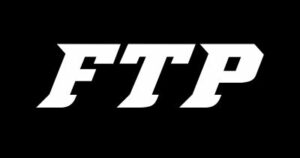“The Ice Isn’t the Only Place You Get Better” – 5 Reasons You Can’t Just Netflix All Summer If You’re a Hockey Player
When the season ends and the gear gets tossed into the garage (still damp, let’s be honest), it’s tempting to go full “couch mode” for the summer. But here’s the deal: the best hockey players aren’t built in-season — they’re built in the offseason.
Whether you’re aiming for varsity, juniors, or just want to stop getting walked at open skate, offseason training isn’t optional. It’s essential. Here are five reasons why you should be grinding before the ice even comes back.
1. Stay Ahead of the Competition (Because They’re Training Too)
Think you’re the only one skipping summer workouts? Think again. According to USA Hockey, over 75% of players ages 14 and up participate in some form of offseason development — whether it’s skills camps, dryland training, or strength programs.
That means if you’re not putting in the work, you’re falling behind.
Offseason training gives you the edge to show up in September faster, stronger, and sharper than your teammates — and maybe steal that top-line spot from someone who’s been busy mastering Call of Duty instead.
2. Build Strength and Power You Can’t Get In-Season
During the season, your body’s constantly in recovery mode from games, travel, and practices. That makes it tough to build real strength. But the offseason? That’s prime time for gains.
A proper hockey-specific program focuses on:
-
Lower body power (think squats, lunges, jumps)
-
Core stability
-
Explosive speed and change of direction
Players who consistently train in the offseason show up to 25% improvement in sprint speed and vertical jump over a 12-week program (Journal of Strength and Conditioning Research, 2019). That translates directly to more speed and explosiveness on the ice.
3. Sharpen Skills Without Game Pressure
Let’s be real — during the season, you don’t always have time to fix your weaknesses. You’re focused on winning games and surviving practices. But in the offseason? You’ve got room to actually improve your stickhandling, shot accuracy, edge work, and hockey IQ.
Want to finally master toe drags, work on your weak-side shot, or learn to shoot in stride? Offseason is your lab. No pressure, no coaches yelling, just progress.
Even 15–20 minutes a day of focused skills work can make a massive difference by fall.
4. Reduce Your Risk of Injury Next Season
Injury prevention starts long before you hit the ice. Studies show that hockey players who commit to structured offseason training (including mobility and strength work) experience fewer groin strains, ACL injuries, and hip flexor issues during the season (Sports Health Journal, 2021).
Why? Because your muscles, tendons, and joints are better prepared for the explosive and often unpredictable demands of hockey.
Think of it like this: Would you drive a car all winter without checking the brakes or changing the oil first? Same goes for your body.
5. Boost Confidence and Mental Toughness
There’s something about grinding through workouts in the summer heat that toughens you up mentally. When you show up to camp knowing you put in the work — when you’ve hit the weights, done the sprints, and dialed in your skills — you carry a different kind of swagger.
That confidence shows up in every shift. You’re quicker to react, more aggressive on the puck, and less likely to second-guess yourself. And if things get tough mid-season? You already know how to push through.
Conclusion: Don’t Just Chill — Train Smart
Look, nobody’s saying you can’t hit the lake, enjoy a burger, or take a breather after a long season. But if hockey’s something you’re serious about, the offseason isn’t time off — it’s your secret weapon.
Train smart. Focus on strength, speed, skill, and recovery. Because the work you put in now? That’s what shows up when the puck drops again.



